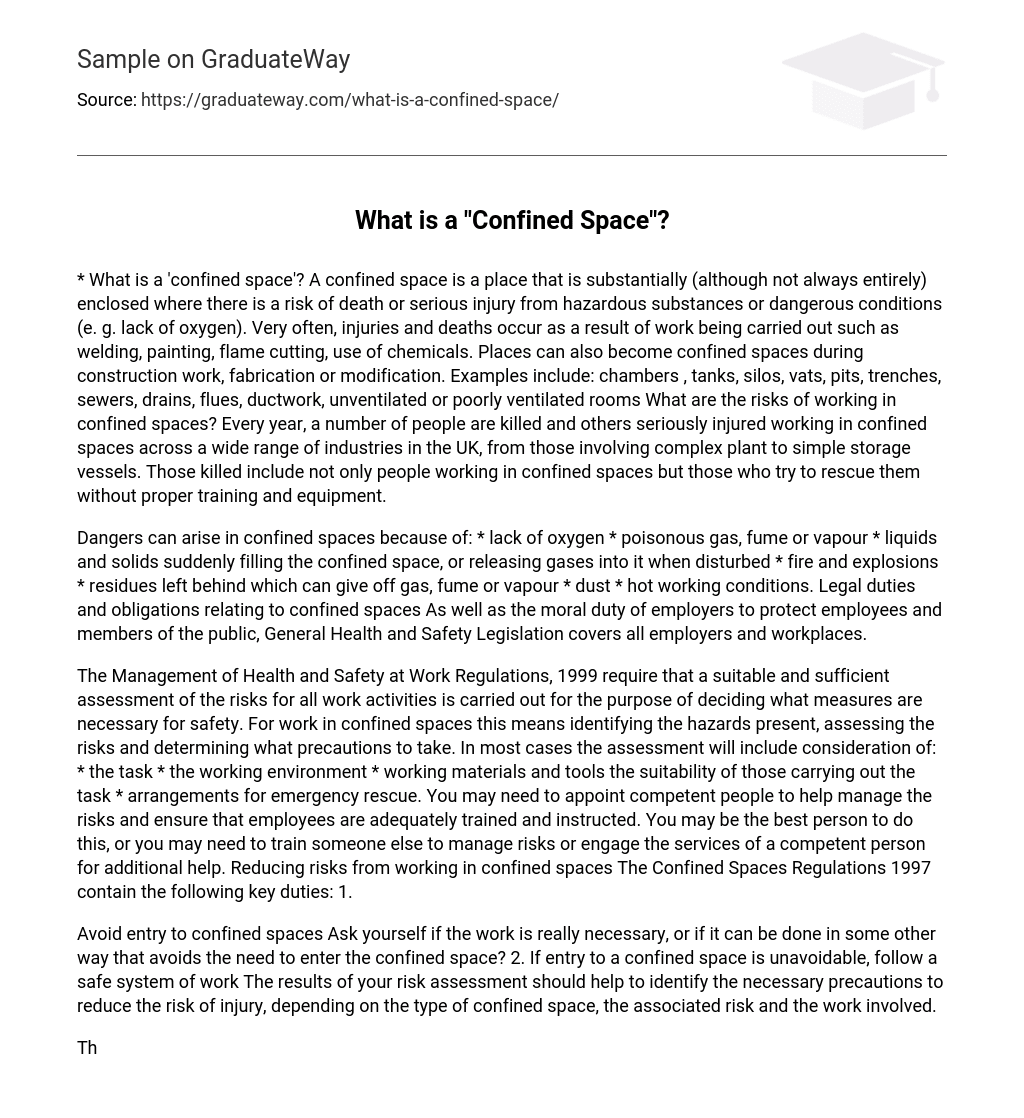Confined spaces are enclosed places that present a danger of death or severe harm due to hazardous substances or dangerous conditions, such as lack of oxygen. These risks often arise from activities like welding, painting, flame cutting, and chemical usage. Construction work, fabrication, or modification can also lead to confined spaces. Examples include chambers, tanks, silos, vats, pits, trenches, sewers, drains flues ductwork and unventilated or poorly ventilated rooms.
Working in confined spaces puts individuals at risk of fatalities and serious injuries every year across various industries in the UK. These incidents may involve complex plant operations or simple storage vessels. It is important to note that not only workers in confined spaces face risks; those who attempt rescue without proper training and equipment are also susceptible to harm.
Confined spaces can pose various dangers including: * insufficient oxygen * toxic gases, fumes or vapors * sudden filling of the space with liquids or solids, or the release of gases when disturbed * risk of fire and explosions * residue left behind which may emit gas, fumes or vapors * dust * hot working conditions. In addition to employers’ moral obligation to protect employees and the public, General Health and Safety Legislation applies to all employers and workplaces.
The Management of Health and Safety at Work Regulations in 1999 state that it is necessary to assess the risks of work activities in order to determine appropriate safety measures. This includes conducting a thorough assessment for work in confined spaces to identify hazards, evaluate risks, and establish necessary precautions. The assessment should consider the task, working environment, materials and tools used, the suitability of workers, and arrangements for emergency rescue. It may be necessary to appoint competent individuals to manage risks and ensure proper training and instruction for employees. The Confined Spaces Regulations in 1997 outline key responsibilities for reducing risks in confined spaces.
It is important to avoid entering confined spaces. Before entering, consider if the work is necessary or if there is an alternative method that does not require entry. If entry cannot be avoided, follow a safe system of work. Use the results of your risk assessment to identify the precautions needed to reduce the risk of injury. Consider the type of confined space, associated risk, and the specific work involved.
The implementation of a safe system of work and the training and instruction of all involved parties are necessary. Additionally, before starting the work, appropriate emergency arrangements should be established. This involves preparing adequate measures for the safe rescue of individuals in case of an emergency, taking into account the safety of rescuers, first aid procedures, and coordination with emergency services.





